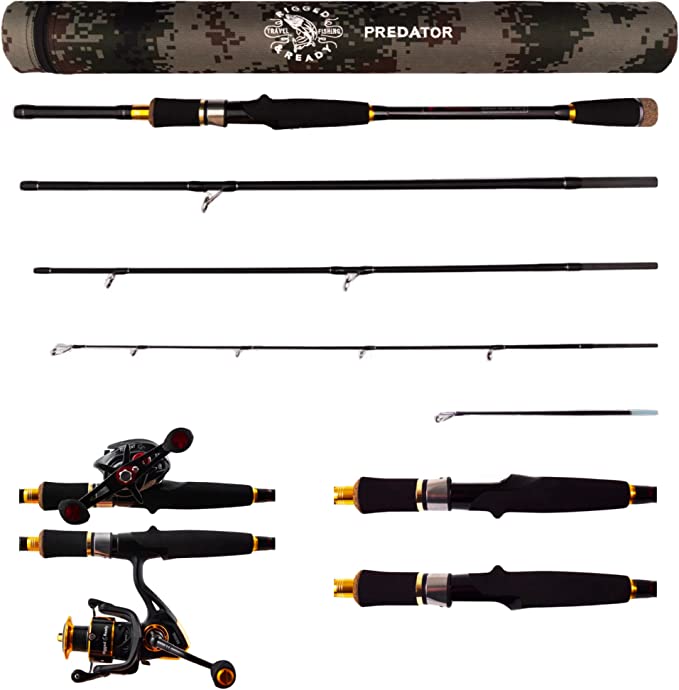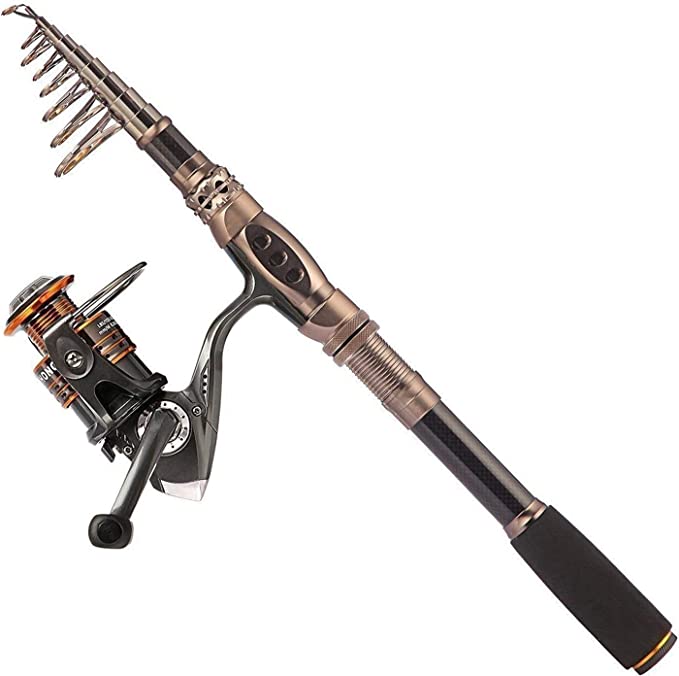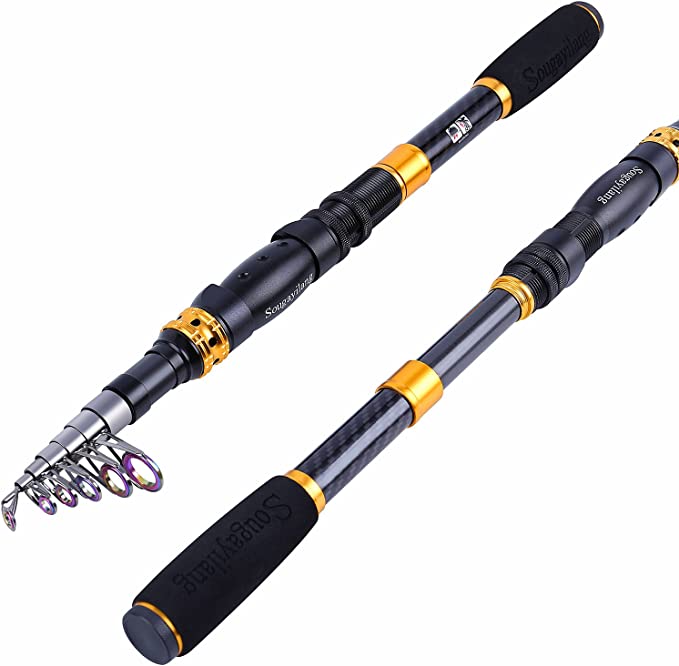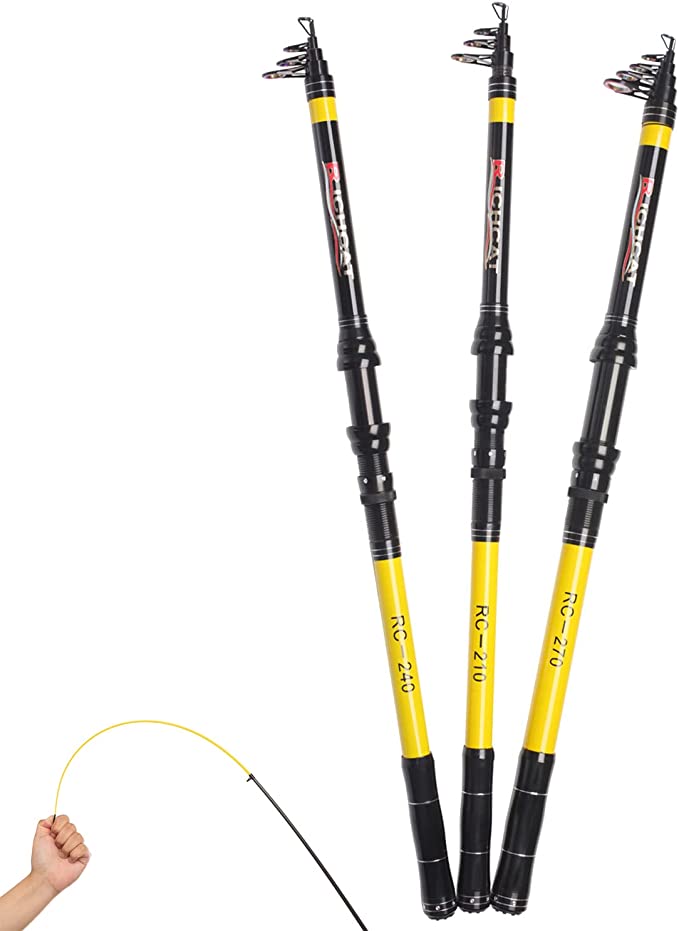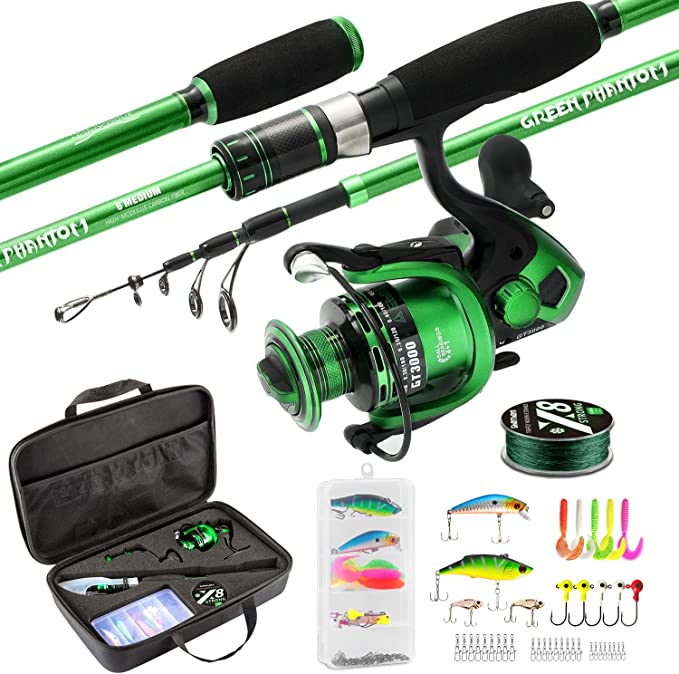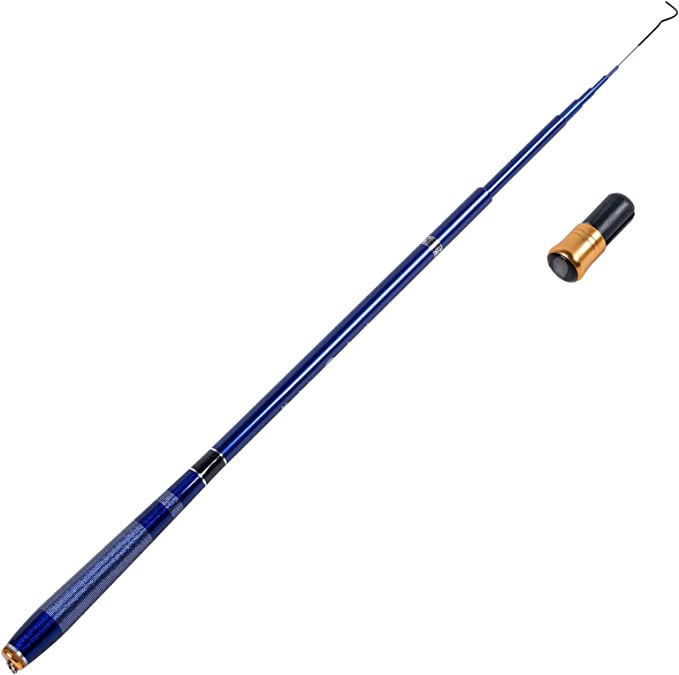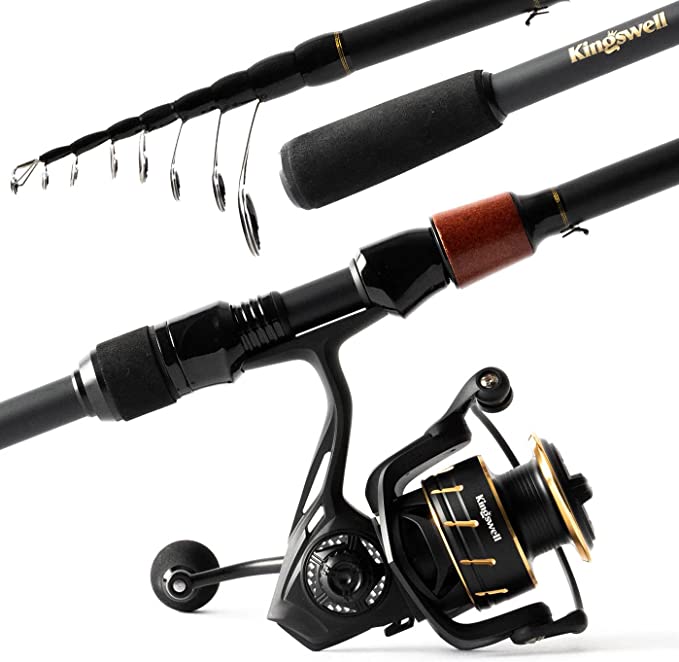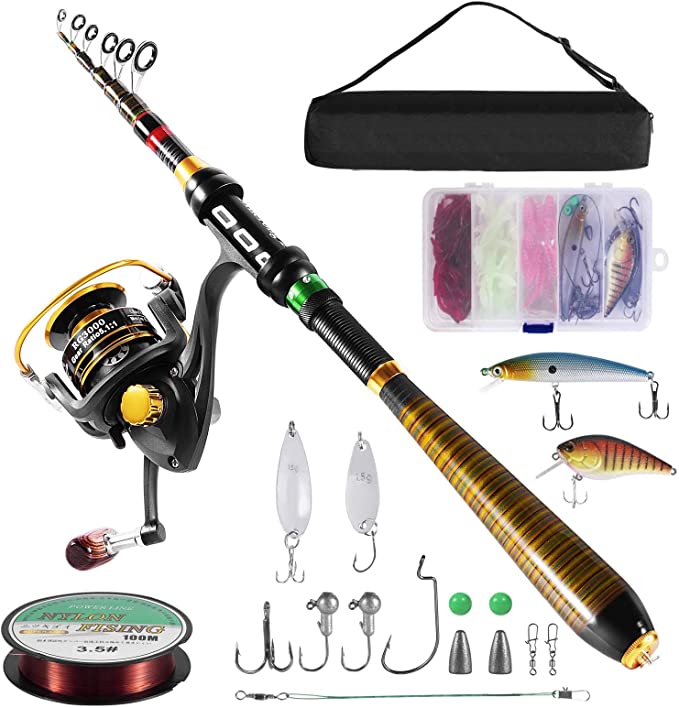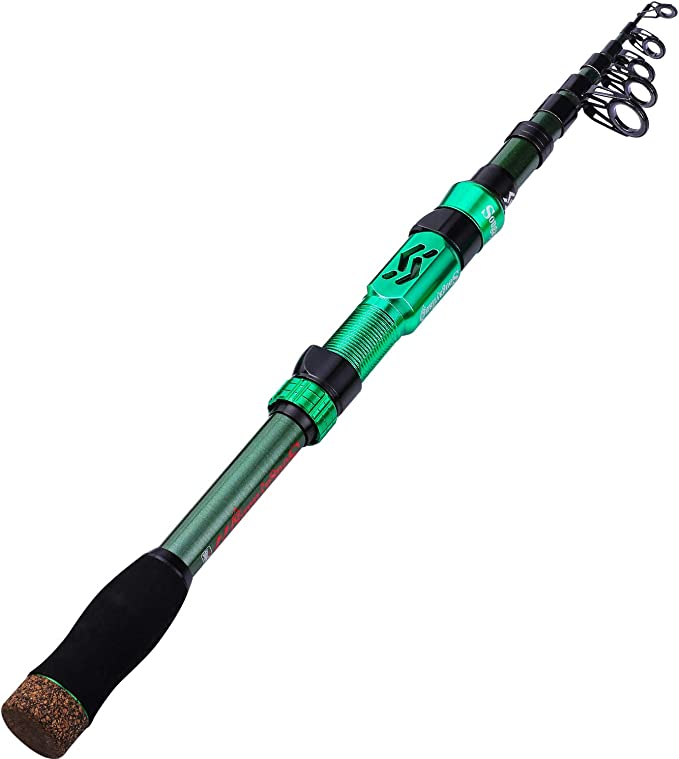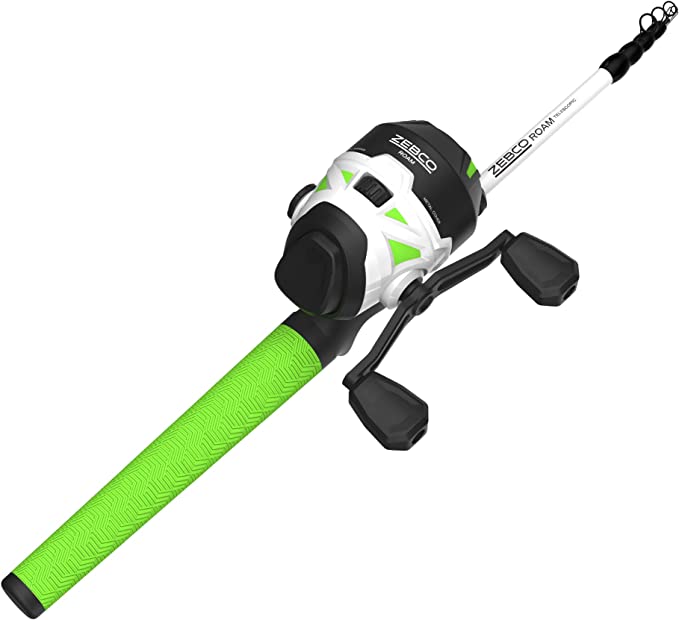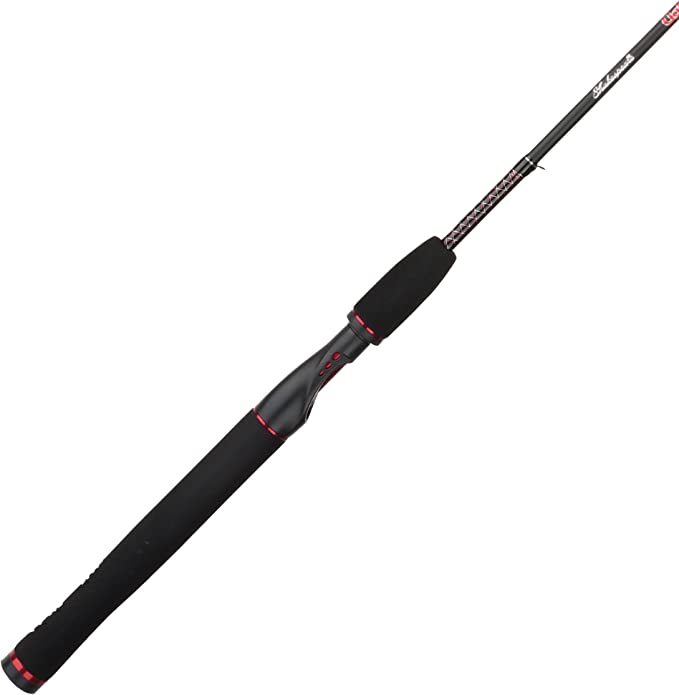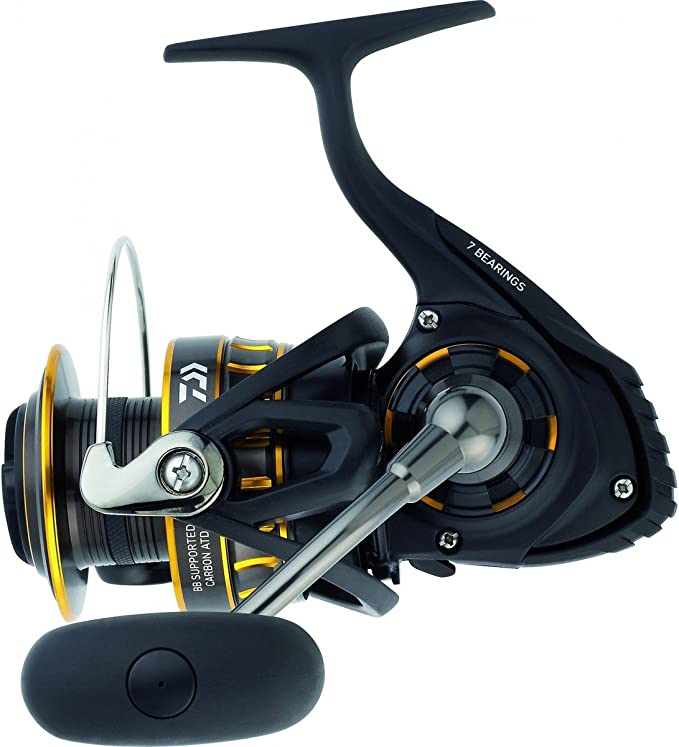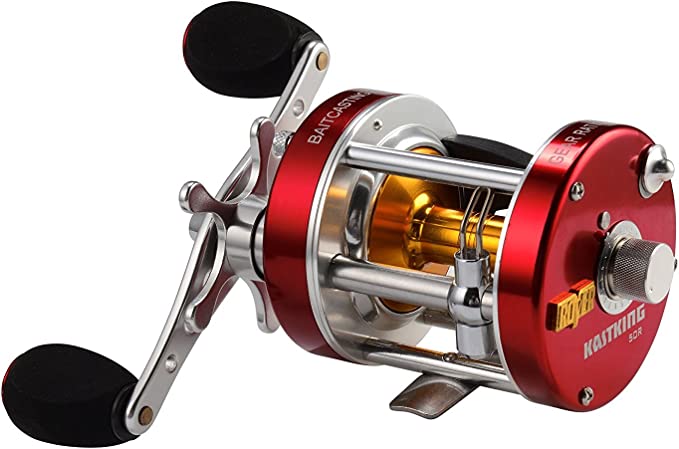Alomejor Telescopic Fishing Rod: The $20 Pocket-Sized Travel Rod (And How to Fix Its Common Quality Flaws)
Update on Dec. 9, 2025, 11:57 a.m.
The ultimate fishing experience isn’t always planned. It’s the unexpected stream beside a hiking trail or the quick kayak session after work. For these spontaneous moments, the bulky, high-performance rods often stay home. The solution? An ultra-portable, budget-friendly telescopic rod like the Alomejor. [cite_start]Priced between $9.99 and $20.27 [cite: 1][cite_start], and collapsing down to a mere 12.6 inches[cite: 1], it seems like the perfect pocket-sized passport to angling freedom.
[cite_start]But a simple look at the 3.2 out of 5-star customer rating [cite: 1] tells a more complex story. This isn’t a premium rod; it’s a study in engineering compromise and the harsh reality of “manufacturing tolerance.”
The Core Compromise: Portability, Price, and Fiberglass Science
[cite_start]Why can Alomejor offer a 2.3-meter (7.5-foot) rod that weighs as little as 65 grams [cite: 1] for such a low price? The answer lies in its materials and design:
- [cite_start]The Telescopic Advantage: The nesting design itself radically reduces the packed size, making it “Perfect for a back pack” [cite: 1] [cite_start]or “Good for kids or the glovebox”[cite: 1]. This design is the key to its appeal as a true “mini fishing rod” or “backpacking fishing rod.”
- [cite_start]The Fiberglass Backbone: The rod body uses an Aluminum alloy + glass fiber mixed structure shaft[cite: 1]. This material—often called “glass steel”—is remarkably robust and highly cost-effective to produce. [cite_start]While it lacks the extreme sensitivity and stiffness of high-modulus carbon fiber, it provides durability and good toughness, essential for budget travel gear[cite: 1].
- [cite_start]The Comfort Factor: The use of EVA (Ethylene Vinyl Acetate) for the handle provides a comfortable, non-slip grip that resists water absorption[cite: 1].
In essence, the Alomejor rod sacrifices peak performance for radical portability and affordability—a pragmatic and acceptable trade-off for the casual angler.
Addressing the 3.2-Star Reality: A Hands-On Fix-It Guide for Common Flaws
The core issues reported by users stem from manufacturing inconsistencies common at this price point. [cite_start]Fortunately, these are often simple quality-control (QC) defects that can be resolved with basic DIY effort, turning a “Junk” rod into a reliable piece of kit[cite: 1].
Flaw 1: The Curse of the Loose Eyelet (Guides Falling Off)
[cite_start]Several users reported that the “Eyelets fell apart on first use” [cite: 1] [cite_start]or that the guide rings were “unglued or glue has dried out”[cite: 1]. This is a classic manufacturing tolerance issue where insufficient or poor-quality adhesive was applied at the factory.
- The Fix: Use a small amount of strong, clear two-part epoxy glue or thick, gel-consistency super glue (cyanoacrylate) to re-secure the loose guides.
- Carefully scrape off any old, brittle glue residue.
- Apply a thin, even layer of epoxy to the underside of the guide ring’s foot (the part that rests on the rod blank).
- Press the guide firmly into its correct position and use masking tape to hold it in place for 24 hours while the adhesive cures. This simple step vastly improves durability.
Flaw 2: The Wobbly Reel Seat
[cite_start]A common complaint is that the screw-down piece to hold the reel “never completely tightens the reel down. It still moves a bit”[cite: 1]. This loose fit is due to variations in the reel seat’s thread dimensions.
- The Fix: Create a secure padding layer.
- Remove the reel. Wrap a small amount of electrical tape or a thin strip of soft material (like a rubber band or cork gasket) around the reel foot before inserting it into the reel seat.
- This material acts as a compressible shim, filling the microscopic gap caused by the wide tolerance. Once the reel is inserted and the seat is tightened, the reel will be held securely in place.
Flaw 3: The Inherent Stiffness
[cite_start]One user noted that the rod is “a bit stiff” [cite: 1][cite_start], particularly near the handle[cite: 1]. This is largely a physical reality for telescopic rods due to Stress Concentration. Where the thin upper sections nest into the wider lower sections, the change in material thickness creates points where bending forces concentrate, requiring the lower sections to be designed stiffer to prevent breakage.
- The Reality: This cannot be fixed, but it can be anticipated. Accept that this rod is optimized for durability and portability over delicate feel. [cite_start]It excels in light-to-medium applications (Bass, Trout, Panfish) [cite: 1] where sensitivity is less critical than robustness.
Choosing Your Weapon: Size Guide for Every Scenario
The Alomejor offers seven size options, each suited for different environments:
| [cite_start]Rod Length Option [cite: 1] | [cite_start]Target Scenario(s) [cite: 1] | [cite_start]Portability Context [cite: 1] |
|---|---|---|
| 1M & 1.2M | Ice fishing, Mini-sea pole | “Sturdy little pole,” perfect for glovebox/kayak use. |
| 1.5M | Light Lure Rod, Sea Fishing Rod | Ideal compromise for backpackers needing a bit more casting distance. |
| 1.7M - 2.3M | Lure Rod, Sea Fishing Rod | Maximum casting distance for a portable option, suitable for river/pond banks. |
[cite_start]If your goal is ultra-lite, close-range stream fishing, the 1M or 1.2M will serve as an “Awesome little rod for kayaking”[cite: 1]. If you need to cast farther on a river or pond, the 1.5M or 1.7M is the superior choice for use with a reel.
Conclusion: Maximizing the Value of a Pragmatic Tool
[cite_start]The Alomejor Telescopic Fishing Rod perfectly embodies the “good for the money” philosophy[cite: 1]. It’s a tool built for spontaneity, not competition. By accepting its necessary engineering compromises and taking ten minutes to apply a few drops of glue to address manufacturing flaws, you transform a potentially disposable gadget into a dependable piece of minimalist gear. The freedom this pocket-sized rod offers—the ability to cast a line anywhere—far outweighs the small cost of a simple DIY tune-up.
